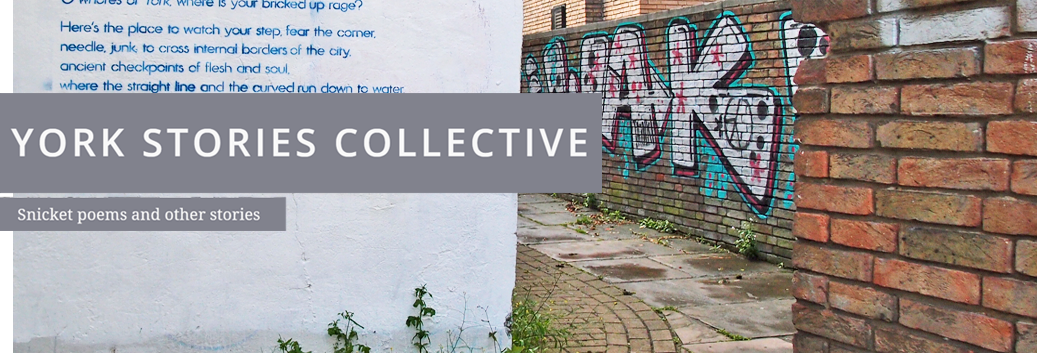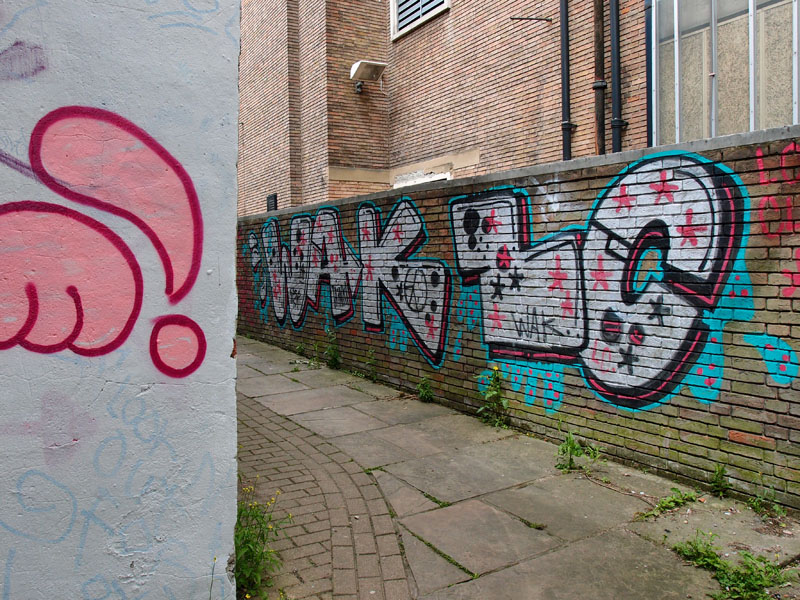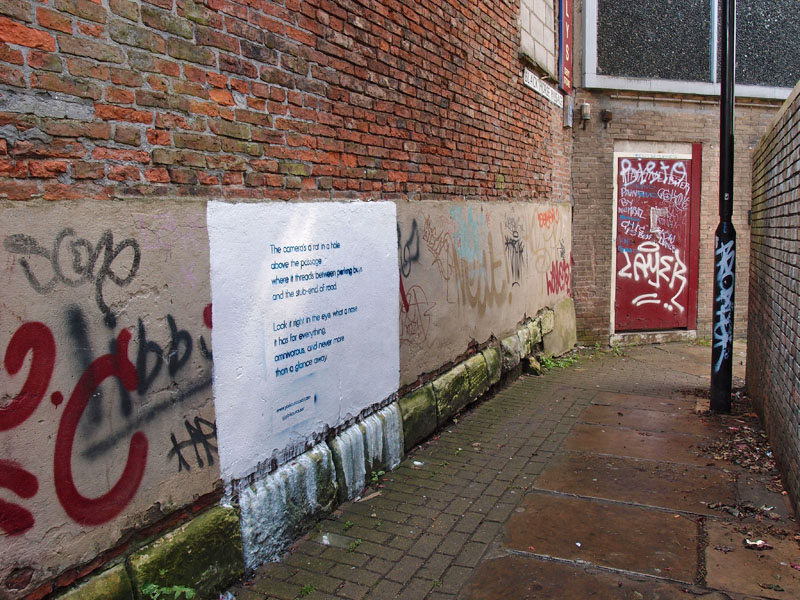In 2014 and 2015 alleyways in York city centre had poems stencilled on their walls, as part of a project, as part of the York Festival of Ideas.
I hadn’t paid much attention to it in 2014, but in 2015 went down one of the alleyways, Black Horse Passage, which was soon to be enhanced with the poetry. I approached Black Horse Passage via the nearby Straker’s Passage, which had been one of my favourite places in the city centre. I’d loved it since first taking photos of it in 2004. I’d loved it because it was honest and grubby and ungentrified, with the Barbican Bookshop along one side of it, and graffiti often appearing on its walls near the weeds and ferns growing out of its bricks. In June 2015 Straker’s Passage, like so many other places, had become a building site, tight with scaffolding, and the picturesque yard at the end of it was full of men in high-vis jackets clearing out its old life to make way for the new.
I felt sad, but I’m used to feeling sad when I walk around York, watching the unselfconscious picturesque bits disappear, one after the other, redeveloped, selfconscious, posh.
At the corner, as I turned into the entrance to Black Horse Passage, bright paint greeted me, graffiti and tagging, in a range of shades and shapes. Jubilant and natural and anarchic. I loved it, felt lifted, felt lifted out of my sad and resigned mood of seconds earlier.
I know we’re all supposed to frown and object to graffiti, but increasingly I find that, in the right places, I like it. Perhaps an indication of how alienated I’ve felt as the needs and desires of the dominant voices have shaped the place and made it rather posh, similar, bland.
I thought about the poems project I’d read about, and wondered where they were going to apply them, and thought that actually I preferred what was here already, as it had happened naturally, part of the spirit of the place.
And the main issue, the question I thought really needed asking, is why some painting on walls gets council approval and funding whereas the stuff I was looking at and liking is seen as a nuisance, illegal.
So it’s apparently okay to paint words on walls and you can even get council funding for it if you’re a proper published poet or an Arts Council funded project, but if you’re a local kid from Tang Hall or Chapelfields it’s vandalism and you face prosecution if caught.
Officially sanctioned Arts Council funded graffiti was obliterating the authentic unfunded graffiti that was there before. It seemed like just another example of local distinctiveness and authenticity being wiped out, whitewashed, replaced with some nice middle-class thing. And, personally, I’m getting quite tired of that.
And then there was the thought-provoking issue of the language used to describe these locations.
By: Lisa @YorkStories


